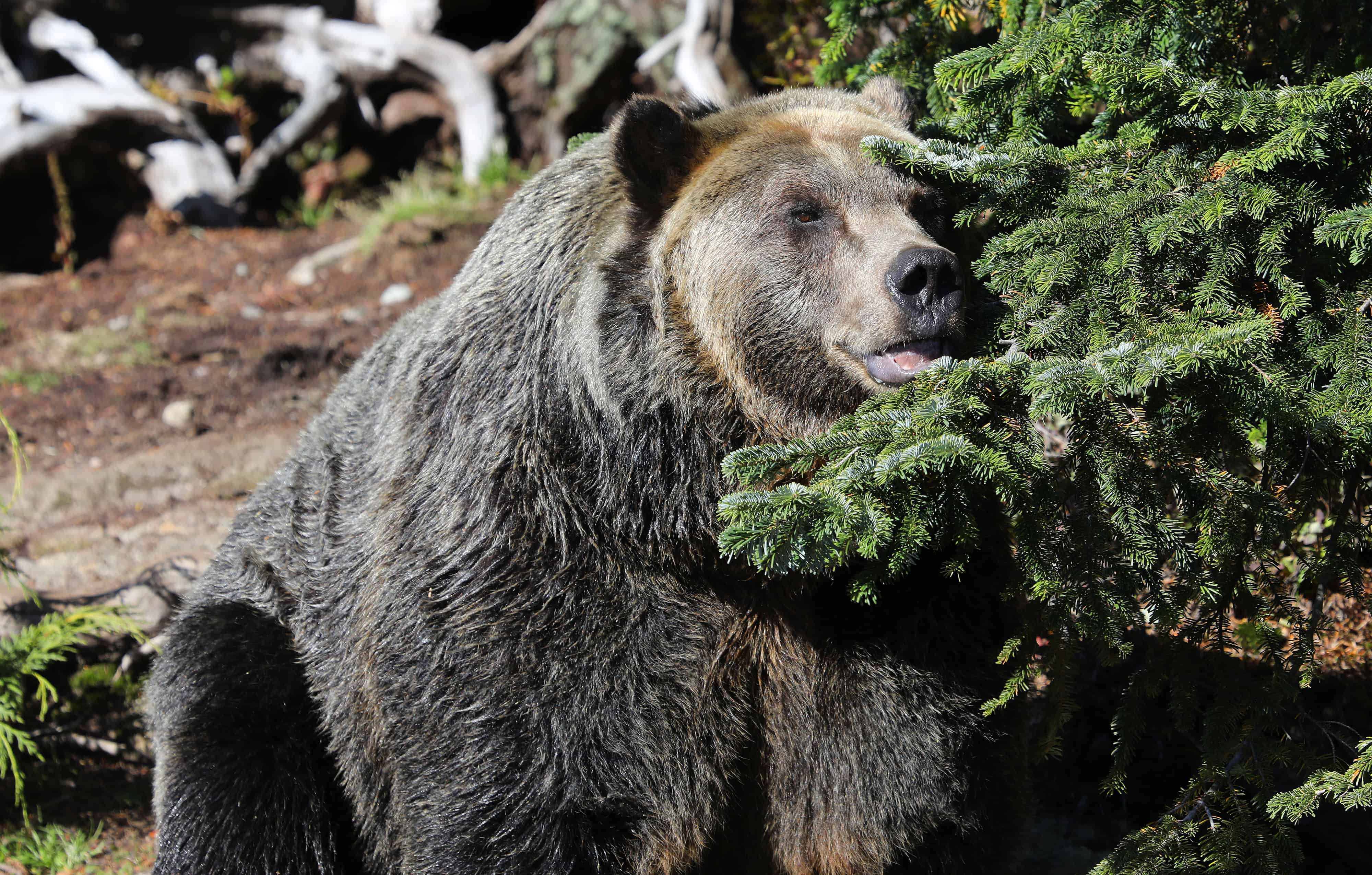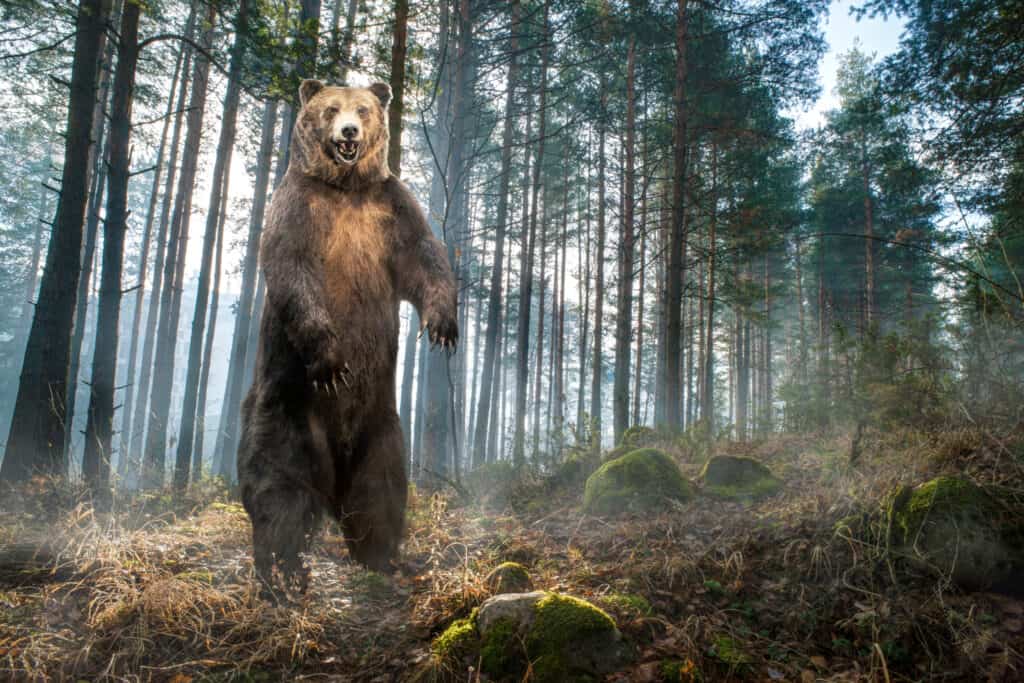Continue reading for our analysis...

This hike in the woods has turned into a frightening experience! A man was walking with his dog when a grizzly bear became a little too interested in them for comfort. The bear makes a series of mock charges towards the man and also seems to be distracted by the dog. Click below to see the full terrifying encounter which we hope ended well for everyone involved.
Where Do Grizzly Bears Normally Live?
The scientific name for grizzly bears is Ursus arctos horriblis and they are a type of brown bear. At one time, they inhabited most of the western United States as far south as Mexico. However, as humans invaded their territories they were driven to the higher grounds. Even though the grizzly bear is California’s state animal, they became extinct in that area in the early 1900s. Their territories are now limited to the lower 48 states and most of them live in northwestern Montana in and around Yellowstone National Park. There are also populations in Canada and Alaska. They are now protected by US law and are considered to be a threatened species.
In terms of habitat, you are most likely to encounter a grizzly bear in woodlands and forests. However, they are also seen on alpine meadows and prairies. They like to live in riparian areas along rivers and streams.
How to Avoid a Grizzly Bear Attack

Grizzly bears stand up to get a better look and pick up scents.
©Degimages/Shutterstock.com
Grizzly bears or large animals with the potential to seriously injure and even kill a human should they decide to do so. If you are hiking in bear territory, it’s a good idea to be prepared. Most bears will avoid you if they see you coming. So, the more noise you make as you are hiking the better. It’s also a good idea to hike in groups.
If a bear does spot you, the best advice is to stay calm and to identify yourself as a human. You are not the natural prey animal of a grizzly bear and this should deter them from pursuing you any further. If it stands up on its hind legs, this means that it is trying to get a better look or smell of the environment. It is not a threat.
As you can see in this clip, bears often use mock charges. They turn away at the last second. When this happens, you should continue to talk to the bear in a low tone of voice and not make any sudden movements. Do not run because the bear can run faster than you!
How Large Do Grizzly Bears Get?

Grizzly bears are among the largest subspecies of brown bear on Earth. They are second only to the Kodiak bear and Kamchatka brown bear. On average, adult male grizzlies range from 400 to 700 lbs in weight, while females average 10% less. Grizzlies can measure from 3 to 9 feet in length.
While bear cubs can be born weighing less than 18 ounces, they will eventually grow very large, depending on location. Male grizzly bears that inhabit the Alaskan peninsula have an average weight of 858 lbs, while females weigh 456 lbs. Grizzlies that inhabit the northern interior of Canada are smaller in size with males weighing 306 lbs and females 209 lbs.
Your mind will be blown by the size of the largest grizzly bear ever recorded. It weighed a massive 1,600 lbs and stood 10 feet tall! This giant bear was killed by hunter Larry Fitzgerald in 2013.
Thank you for reading! Have some feedback for us? Contact the AZ Animals editorial team.






